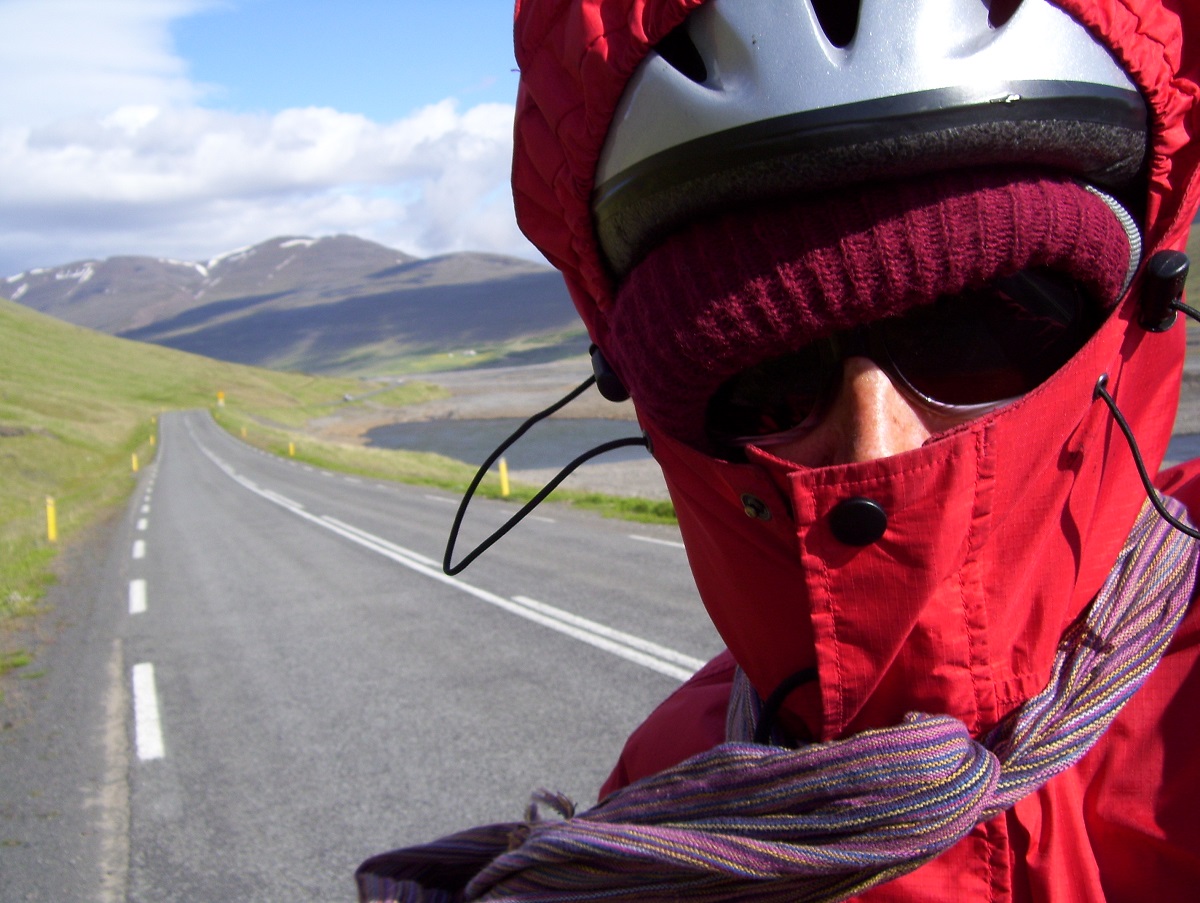The Adventure of Going Alone
Continued from Beyond the Doorstep Mile and Setting Me Loose.
I was shocked when I looked up and saw a lake full of icebergs. The giant blocks hung there in the water, cold and beautiful. They were solid white but seemed to glow a translucent teal from the inside out. It all felt very strange and mysterious.
I got off my bike and walked to the edge of the lake. A smooth wall of air drifted over the water and slid past my cheeks, making me shiver. A few other tourists hung along the shore at intervals, but mostly I felt alone — a feeling I enjoyed and yet didn’t. I was 21 years old, cycling alone around Iceland, and I loved these beautiful, solitary places. But I also felt strangely troubled by my solitude.
That evening I camped on the lee side of a rocky cliff that looked out over the ocean. I made myself dinner, set up my sleeping bag, and stood outside to watch the subarctic sunset. On one side loomed a giant, sliding mountain; in front of me stretched the endless sea. There was no sign of other humans in any direction, and this comforted me. I loved being out there alone, a little speck in a big place. I could take care of myself out there and I knew it.
Of all the stories we hear about outdoor adventure, relatively few come from the perspective of women who adventure alone.
But this reality kept conflicting with the story I told myself about happiness. I felt like something must be wrong with me. Every book I’d read, every movie I’d watched, each one linked women’s happiness to their relationships with men. It didn’t seem possible that I could be happy on my own, and my comfort in solitude made me uneasy.
Of all the stories we hear about outdoor adventure, relatively few come from the perspective of women who adventure alone. Male solitude carries strength and a romance, but female solitude is often seen as unusual, undesirable, or risky. As I’ve gotten older, I’ve learned to consider this discrepancy in our social narrative as an unnecessary hindrance. But at the time, being a young woman who traveled alone carried a certain weight: I often questioned myself, even when I didn’t have to.
Luckily, pedaling gave me a respite from this uncertainty, and I loved falling into the flow of repetitive motion. Iceland’s landscapes were stark and dreamlike and quickly pulled me into their altered reality. On one side, glaciers rose rough and rocky; on the other, the sea sparkled in windswept whitecaps. Then suddenly all of it would disappear in rolling green hillsides and endless, flower-filled meadows. There was no way to predict what would appear around the next bend, how the weather would shift, or how I would feel in relation to any of it. It was just one pedal stroke at a time, over and over again, across landscapes that engulfed me and took me with them. It was so dazzling that I couldn’t wrap my mind around it, so at some point, I just stopped trying. Cycling was a way of being there and disappearing at the same time.
My measurements for “normal life” eventually lost their bearing, and I settled into a new kind of daily rhythm. When I got tired, I stopped and camped. When I got hungry, I ate something. I didn’t have a phone to check in with anyone or music to distract me from my thoughts. One day when I rolled into town to resupply, I was surprised to find all the grocery stores closed. I checked my watch and realized it was past midnight. It was still so light out that I hadn’t even noticed that it was nighttime.
You would think that my insecurities about singlehood would make me want to present myself as attractive as possible. But, rather, my clothes were a mishmash of baggy jackets, thrifted sunglasses, and a hat that was so big it constantly slipped over my eyes. I always wore one pair of socks pulled high over my pant legs, and I liked to wear another pair on my hands like mittens. Each night I carefully placed one of the least stinky ones over my eyes like a face mask against the summer sun.

I challenged myself to bathe at least a couple of times a week. But this really just meant splashing myself lightly with stream water, then shrieking and pretending I was suddenly clean. Eventually, I discovered public swimming pools, and this revelation made me considerably cleaner. Each town had a geothermically heated pool that was usually packed with pale and ruddy Icelanders. Every time I shuffled in, I felt a little guilty about my state of dishevelment — my swimsuit was just an old sports bra and underwear, and neither of those was particularly fresh. But people always made room for me in the water and inquired politely about my journey.
One of the best things about cycling was getting to be myself, without caring what I looked like or who liked me. I loved being dirty and wild, and it felt like the biggest freedom in the world to not have to worry about my appearance. There was nothing better than being out there on the road, disappearing into the wind.
We don’t always believe in ourselves. We live in a world that tells us to be afraid.
But of course, intertwined with this freedom were other realities. The wind that I loved so much also lashed at my face and shoved my bike all over the road. A bag of dried fish burst in my pannier, infusing all my clothes with the smell of old haddock. And I began to develop a persistent pain in my knees that seemed to worsen by the day. But really the biggest challenge was always the struggle I had with myself. Self-doubt is what I had to pedal through.
For most people on solitary journeys, dealing with yourself is one of the biggest parts of the adventure. But for many women, this is compounded by a social narrative that questions our position as solo adventurers in the first place. For women from marginalized backgrounds, this is compounded even more.
The process of learning to own our independence is sometimes understood as a battle with external factors — a fight against people who inhibit our paths and tell us we can’t go alone. For me, the biggest challenge to owning my independence comes from within. Social narratives continue to live inside me, internalized, until I change them for myself. This takes time, imagination, and miles.
When I first started writing about my bike trips, I assumed that I would write from a position of self-confidence. But when I examined my memories of the past, I realized that wasn’t actually my story. And I think this may be the case for many women. We don’t always believe in ourselves. We live in a world that tells us to be afraid.
And yet, we do these things anyway. We pedal and take risks and move forward in ways that challenge the stories we hear from others and tell ourselves about who we are and who we have to be. It doesn’t always feel good or make sense at the time. But this is what adventure looks like. It is forward motion. You just keep moving.


